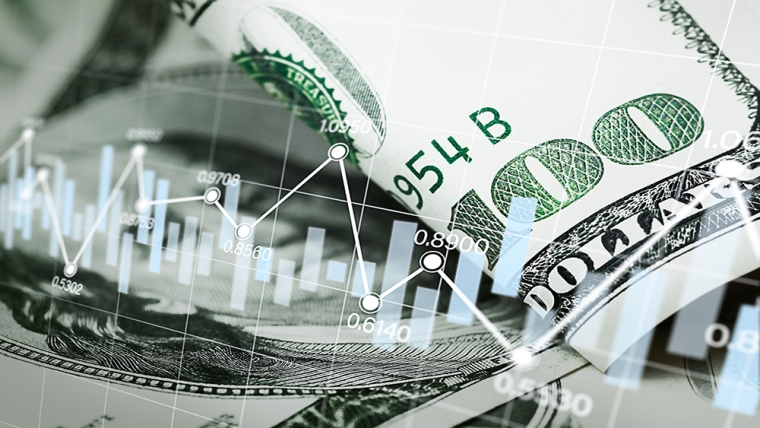
It was an uneventful trading session ahead of Fed Chair Powell’s scheduled 6:40am fireside chat at the Economic Club of Washington, with bonds and equities flat in a consolidation mode. There was much anticipation about what Powell would say, following Friday’s shockingly strong jobs and ISM services reports, which followed the dovish market reaction to Thursday’s FOMC meeting.
Powell reiterated that the disinflationary process has begun but “has a long way to go”, with reference to the services sector. He reiterated that the Fed probably needs to do further interest rate increases, conditional on incoming data. As we go to print Powell is still chatting but fears of a more hawkish tilt post jobs data hasn’t eventuated and the initial market reaction has been a weaker USD and lower rates, the 2-year rate currently down 8bps and the 10-year rate down 4bps to just below 3.6%.
Earlier last night, Minneapolis Fed President Kashkari evidently hadn’t changed his December view of the Fed Funds target range needing to rise to 5.25-5.5%, which is one extra hike above the FOMC median, saying “no one should overreact to one report…but the underlying strength of the services sector of the economy is still very robust and that’s where I think a lot of us are focusing our attention”.
In a media interview yesterday, Atlanta Fed President Bostic reiterated his base case of the Fed Funds target range peaking at 5-5.25% with two more 25bps hikes, in line with the median FOMC projection, but added that if a stronger-than-expected economy persists, “it will probably mean we have to do a little more work”. He said that this could take the form of a third 25bps hike, while not ruling out the possibility of a larger 50bps hike.
In economic news, the US trade deficit was slightly smaller than expected in -$67.4b in December, after the advanced reading for the goods side, but the annual deficit for 2022 still widened to a record $948b. And with US CPI high on the watchlist for investors, it is notable that Manheim reported that used vehicle prices rose for the second consecutive month in January, up 2.5% m/m, with price increases that were “not typical”.
Japan wage data were much stronger than expected, up 4.8% y/y in January, boosted by winter bonuses. Multi-decade highs for inflation measures have become the norm for Japan, but the market was reluctant to read too much into the figures, with ex-bonus wage inflation at 1.9%, below the 3% mark the BoJ would be more comfortable with. While there was little initial reaction to the yen, the currency has been the best performer overnight and since this time yesterday, with USD/JPY down over 1½% to 130.60.
In other currency moves, we noted the USD weakness as Powell spoke, with the USD BBDXY index down 0.6%. The AUD was well supported after the RBA’s hawkish hike (see below), and its performance is second to the JPY over the past 24 hours, currently at 0.6980. This has sent NZD/AUD down to 0.91. As noted in our weekly currency note yesterday, we see a chance of the cross breaking below 0.90 over coming months with scope for NZ-Australian rate spreads to narrow further.
The NZD itself headed from 0.63 to 0.6350 as Powell spoke and, while down against the strong AUD and JPY, it is higher on the other crosses, making up some lost ground late last week and early this week.
The overnight GDT dairy auction showed a 3.2% lift in the price index, the first increase since early December, and a strong result in light of the rebound in the USD. Whole milk powder rose 3.8%, skim milk powder flat and there were decent gains for the fats with butter up 6.6%. The good auction reduces some of the downside risk that has been developing for this year’s milk payout.
The RBA delivered the expected 25bps hike in its cash rate to 3.35% and tilted the policy guidance in a more hawkish direction commenting “further increases in interest rates will be needed over the months ahead” and removing the previous comment that policy was not on a pre-set course. This implies at least two more rate hikes and, with other dollar-bloc countries already sitting with cash rates with a 4-handle, the RBA needs to deliver at least three more rate hikes just to get to that level. The market got the memo and priced in a bit more tightening but still seems reluctant to price a cash rate above 4%. The 3-year bond future is up 13bps in yield terms since the RBA statement (timed at the NZ close) while the 10-year future has added 12bps in yield, and this move is likely to spill over into higher NZ rates on the open.
After the Waitangi Day holiday, the NZ rates market played catch-up to the big two-day move higher in global rates that followed Friday night’s strong US data, seeing swap rates rise 16-17bps across the curve from multi-month lows, seeing the 2-year rate close at 4.87% and the 10-year rate at 4.20%. There was a similar move for NZGBs, although ultra-long bonds outperformed, with smaller 11-13bps moves.
In terms of the economic calendar ahead, it’s slim pickings over the rest of the week. Overnight there will be more Fed speakers, with NY Fed President Williams the key one to listen to.

We welcome your comments below. If you are not already registered, please register to comment
Remember we welcome robust, respectful and insightful debate. We don't welcome abusive or defamatory comments and will de-register those repeatedly making such comments. Our current comment policy is here.